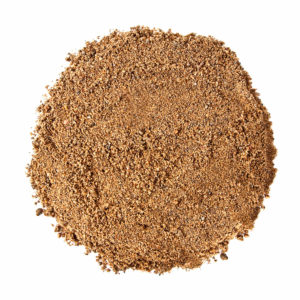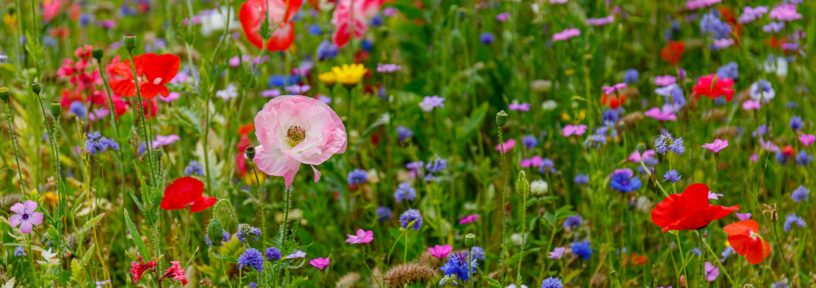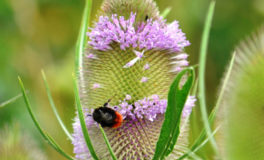The best soil for wildflowers – As gardeners, we’re used to feeding and improving the soil to nurture the best possible flowers, fruit and vegetables. But to get the best from native plants and wild flowers we need to take a completely different approach.
Wildflowers Don’t Grow Well In Rich Soils
Our native wildflowers and grasses evolved centuries ago – long before man invented chemical fertilisers. These plants have very simple needs; The right amount of water, enough soil to grow in, bees and butterflies to pollinate their flowers and a means of dispersing their seeds. That’s all.
To most of our wildflowers, nutrient-rich soil is almost toxic. That’s a difficult concept for farmers and gardeners to grasp – so here are a couple of analogies to help:
- The soil is a source of nourishment to plants. Just like people, too much nourishment of the wrong food can be fatal.
- Imagine feeding a child on nothing but takeaway fast food – he or she would grow into an unhealthy adult.
- Horse owners will know of an equine illness called laminitis. It’s the equivalent to gout in humans and happens when native ponies, who have evolved to thrive on a very poor diet, are given lush grass and food supplements. However well-meaning the intention behind feeding them “well” – the condition is painful and often fatal.
Wildflowers just cannot cope with a nutrient-rich diet. Over time, all but the most thuggish species (docks, nettles, brambles) will perish.
 |
||
 |
However, Wild Grasses Love Rich Soils – Just A Bit Too Much…
Here’s another downside of growing wildflowers and grasses in nutrient-rich soil. The flowering species will languish and the grasses will love life. To such an extent that they steal space and light from the flowering plants and weaken them even more.
So, growing a perennial wildflower meadow on ordinary garden soil is incredibly difficult because over time the grasses take over and the flowering plants disappear.
How To Balance Soil Fertility For Growing Wildflowers
It is possible, over the space of several years, to reduce the fertility in your soil enough for wildflowers to grow successfully. But when we say years, we mean YEARS. Our own mini-meadow was installed using wildflower turf six years ago. We laid the Meadowmat straight on to garden soil and we have been battling the grasses ever since. Here are a few ways to reduce soil fertility:
1) Grow yellow rattle alongside other flowers. Yellow rattle is a wildflower despised by old-time farmers (who wanted forage for their animals) because it predates on grass plants and weakens them.
2) Cut down and remove vegetation regularly. If the grass is really a problem in your wildflower area, you’d be as well to forfeit the flowers for a year or so and keep mowing the area, removing the clippings every time. For a “normal” meadow, it’s Ok to let the flowers bloom and then cut the stems, stalks and neighbouring grasses down at the end of summer. Remove those clippings too.
3) The easiest and quickest way to get rid of high fertility soil is to physically remove it. Dig it up and take it away then replace it with a specially blended Low Nutrient Soil. Always buy from a reputable supplier – there are plenty of people out there who will mistakenly sell you soil that looks poor but is actually quite high in nutrients.
Where To Find The Best Soil For Wildflowers
The bagged soil available here has been blended and tested for its suitability for wildflowers.
We know where it was made and we know it’s not been contaminated with anything toxic or poisonous.
At first glance, it may look more expensive than garden soil. It is. That’s because there is so little soil in the UK that hasn’t been farmed or gardened. Everything has been “improved” so much that it won’t support wildflowers. This soil has been made from a mixture of carefully sourced ingredients. If you want to help the UK ecology by growing native plants, this soil will save you a lot of disappointment and frustration.

 Is my garden soil too rich for wildflowers?
Is my garden soil too rich for wildflowers?  Prepare soil for a wildflower bed
Prepare soil for a wildflower bed 

